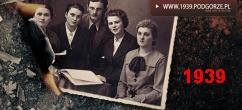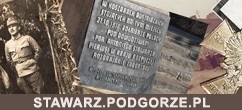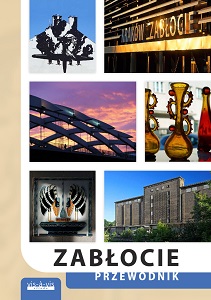THE TREASURES OF PODGÓRZE – Krakow’s Right Bank
The Podgórze district is the home of mysterious prehistoric earthworks, ancient buildings and sites known from 'Schindler’s List’ as well as beautiful landscaped parks and unique nature reserves. The area offers exceptional opportunities to explore natural surroundings in the historical settings on the south bank of the Vistula river. Start your journey of discovery here…
Archaeological evidence shows that there was a settlement in the Podgórze area over 10,000 years ago.The Free Royal City of Podgórze was established by Austrians on the south bank of the Vistula river in 1784. It developed into a prosperous, industrial city which in 1915 became part of 'larger Kraków’.
PLACES TO VISIT:
The Mound of Krak (Kopiec Krakusa) – the oldest known structure built in Podgórze. It was probably erected in the 7th century. Its original purpose is still unknown although various explanations have been put forward over the years. According to legends, it is the burial place of King Krak who established the city of Kraków. Most likely it could have been a sacred pagan place. During excavations at the bottom of the mound remains of huge oak and a fire-place were discovered. The mound of Krak is some fifty feet high (16.7 m) and provides an excellent viewpoint.
St Benedict’s Church (Kościół św. Benedykta) – The smallest, one of the oldest and most mysterious churches. Built on the highest point of Lasota Hill in the 10th or 11th century at the pagan worship site. Archaeological excavations suggest the existence of a small castle and dwellings in the surroundings. At present this tiny church is open for religious service only once a year, on the Tuesday after Easter when 'Rękawka’ fair takes place.
Schindler’s Factory – 4 Lipowa Street. This ordinary grey three-story building with lots of windows is still used as an electronics factory. During WWII enamelled pots and pans were manufactured here. Oskar Schindler, an ethnic German industrialist from Czechoslovakia, saved Jews from labour camps by employing them in this factory. His story was told in 'Schidler’s List’. Now Museum – Kraków under Nazi Occupation 1939–1945
The Eagle Pharmacy (’Pod Orłem’) – 18 Bohaterow Getta Pl. Museum located in the former ghetto pharmacy which was run by Tadeusz Pankiewicz, the only Pole who lived in the ghetto from the moment it was established until its end. He helped Jews in the ghetto acting as a contact point with the outside world and a hiding place. In the museum are displayed pictures of the roundup and deportation of the Jews of Kraków and a few religious artefacts. The square was the centre of the ghetto and from this place Jews were selected and transported to concentration camps. Two remaining parts of the original ghetto walls are located nearby, in Lwowska Street, and in Limanowskiego Street, behind the school.
Plaszów Camp memorial – Kamieńskiego Street. The large monument commemorating all the victims who died in the Plaszów concentration camp. Established in 1942 near the site of an old granite quarry, it was the largest concentration camp in Kraków area.
Old Cemetery of Podgórze (Stary Cmentarz Pódgórski) – opened in the last quarter of the 18th century. It was the burial place of the noble citizens of Podgórze, politicians, entrepreneurs and artists. The most famous person buried there is Edward Dembowski, leader of the uprising in 1846 (this is the first grave on the right when you enter through the main gate). Last century, parts of the cemetery were destroyed during the building of a railway line and in the 1970’s by new roads. Nowadays, it is partly taken over by nature an has became a peaceful haven for wildlife close to the busy road junction.
St Benedict’s Fortification (Fort św. Benedykta) – built between 1853-56 was one of the first parts of the city defence built by Austrians. One of the very few surviving examples of a fortification known as 'Maximilian’s Tower’. At present it is partly renovated and waiting for new use.
Lasota Hill (Wzgórze Lasoty) – hillside settlement designed according to the ideas of the Garden City movement. Picturesque houses set in large gardens were built at the turn of the 19th and 20th century.
Market square of Podgórze (Rynek Podgórski) – large square with stylish houses. On the corner at number 1, is the former town hall of The Free Royal City of Podgórze built in the early 19th century. At the highest point of the square there is a large, brick, neo-gothic church of St. Josef. It has replaced the earlier and much smaller one. Its spire recalls the spire of St. Mary’s Church on the main market of Kraków.
Bednarskiego Park – Parkowa Street. Established in 1896 by Wojciech Bednarski, the headmaster of the local school at the site of the former quarry. At that time it was a very innovative idea and it set an example of the use of post-industrial areas for green spaces. In this beautiful landscaped park there are over one hundred species of trees. This spectacular location incorporates high rocks and natural valleys, as well as varied wildlife and this makes it one of the most popular parks in the city.
Starmach Gallery – 5 Węgierska Street. This art gallery is located in a carefully restored interior of a former synagogue built in 1879-81. This is the largest private gallery in Poland. And it regularly holds major exhibitions of post-war and modern art.
Museum of Podgorze – opening autumn 2017.
Mateczny Spring – spring discovered by Antoni Mateczny in 1898 while digging for drinking water on his plot of land. He has established a therapeutic bath which was operational until WWII. Mineral water is still extracted here. Over 2 mln of bottles are produced each year. Mateczny is also the name of one of the busiest roundabouts in Kraków.
Krzemionki – large natural park located in geometric centre of Krakow. From the second half of the 19th century this area has attracted a lot of interest. Some parts were transformed into attractive woodlands with maples, sycamores, lime trees and elders. Grassy areas contain many types of plants which flourish in a dry and hot environment and form so called xerothermic meadows. This is the important feature well worth protecting.
Liban quarry – named after the owner Ernest Liban. This abandoned and inaccessible quarry was quickly colonised by plants and animals. At the bottom reeds were created which became a habitat for reptiles. On open water Little Grebes, Coots, Pochards, Mallards, Tufted Ducks can be seen swimming and feeding. Kestrel can be spotted flying high above. This is the most common bird of prey in Poland, it is distinctive in its flight and hovers frequently. During the filming of 'Schindler’s List’ Steven Spielberg constructed barracks buildings of a labour camp here, part of the film set is still visible.
Bonarka – nature reserve which is a place of great geological interest. It is a good example of a geological fault, one typical of the Kraków area. One can walk at the bottom of the ancient Jurassic sea and look for prehistoric fossils.
HOW TO GET TO PODGÓRZE FROM KRAKOW CITY CENTRE:
Podgórze is only a short walk across the Vistula river from Kazimierz
By tram 3, 8, 10 to the „Korona” stop
By tram 13, 24, to the 'Plac Bohaterów Getta’ or „Powstańców Śląskich” stop
If you have any queries about this website or you would like to know more about Podgorze please do not hesitate to get in touch with us: pawel@podgorze.pl
ENGLISH LANGUAGE GUIDE TO PODGÓRZE DISTRICT – MARCIN ZIOBRO tel. 607 511 776







